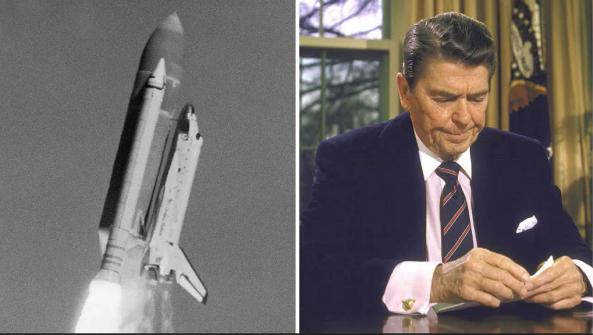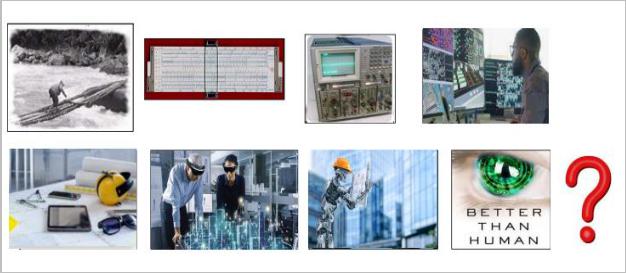
9517
.pdf21
down. This turned out to be a good example of a syllogism, albeit based on an inaccurate premise:
1.The pillars of Citicorp Center are in the wrong place.
2.If the pillars are in the wrong place, the building will fall down.
LeMessurier pointed out to the student that the pillars in Citicorp Centre were not in the wrong position; they were just in a novel position.
However, in researching his answer to the student LeMessurier discovered much in his dismay that there was a significant problem in the building's structure.
In his original plans, the joints for the wind braces were supposed to be welded; in the actual structure, as a cost-saving measure, they had been bolted. Normally. bolts would have been strong enough, LeMessurier discovered that in the case of what is known as a "quartering wind"-a wind hitting the building at a 45degree angle-the bolts were not reliable. In fact, there was a statistical probability that at least once every 16 years, New York City would be subject to the kind of storm that could destroy the Citicorp office tower.
LeMessurier presented a problem, but, perhaps more importantly, he presented a detailed solution that everyone believed in. LeMessurier’s acts and statements to the City officials were perceived to be honest and professional.
In the words of William LeMessurier to his students at Harvard: You have a social obligation. In return for getting a license and being regarded with respect, you’re supposed to be self-sacrificing and look beyond the interests of yourself and your client to society as a whole. And the most wonderful part of my story is that when I did it, nothing bad happened.
(adopted from http://www.theaiatrust.com/whitepapers/ethics/LeMessurier-Stands- Tall_A-Case-Study-in-Professional-Ethics.pdf)

22
Case study 2
Faulty Communication and Real Consequences
Let's move to a real example of an ethical situation in technical communication.
In 1986, the spaceship Challenger exploded. What you may not know is that a failure of communication was partially responsible for that disaster. There was an "O-ring problem," or "the failure of a rubber seal in the solid rocket booster" with regard to the shuttle's construction (Winsor 336). From early 1984 until July 1985, the O-ring problems were noticed but not taken seriously. On July 22, 1985, MTI engineer Roger Boisjoly sent a memo to R.K. Lund, who was MIT's Vice President of Engineering. In the memo, Boisjoly stated that the O-ring problem was serious, and concluded, "It is my honest and very real fear that if we do not take immediate action . . . to solve the problem . . . then we stand in jeopardy of losing a flight along with all the launch pad facilities".
The emotional language throughout the memo, but especially in the last paragraph, suggests Boisjoly strong feelings in this situation. However, appeal to emotion weakens his case. Others assume he lacks tangible evidence.
23
Boisjoly’s memo failed. No defined team ever seems to have worked on the problem. The Challenger launch was delayed because of the O-ring problem, but on January 28, 1986, the shuttle launched. And exploded.
Boisjoly’s critical message might have had a more positive reception if he had grounded his argument and many tests instead of wrapping it in emotion. Would things have turned out differently if he had communicated his concerns rational and reliable.
B. So, why engineering communication is different from other kinds of communication? What makes engineering communication effective? Give examples of what you consider effective communication.
Explain how it meets the characteristics of an engineering communication.
Invent Ideas
Choose your Project
Project Option 1
Essay
Write about the following topic: "Is Civil Engineering a challenging profession?"
To what extent do you agree or disagree?
Think about: Why is this profession important for people?
What biggest challenges do engineers encounter in the course of their careers? Why have you chosen engineering profession?
Which of the benefits of this profession are the most important to you?
Why is this area interesting to you and what aspects of your personality are manifested here?
Answer the questions clearly and completely; give reasons for your answer; include relevant examples from your knowledge or from your experience. Write at least 180-200 words.
24
Essay will be marked on one of the following criteria:
1.Task Response (Решение коммуникативной задачи (содержание);
2.Coherence and Cohesion (Организация текста (структура);
3.Lexical Resource (Лексика);
4.Grammatical Range and Accuracy (Грамматика).
Learning strategy
Here’s a step-by-step way to answer any essay question:
Step 1: On a blank sheet of paper, write down all the facts, ideas, concepts, and so forth, you feel should be included in your answer.
Step 2: Organize them in the order in which they should appear. You don’t have to rewrite your notes into a detailed outline-just number each note according to where you want to place it in your essay.
Step 3: Compose your first paragraph. It should summarize and introduce the key points you will make in your essay. This is where superior essay answers are made or unmade.
Step 4: Write your essay, with your penmanship as legible as possible.
Step 5: Reread your essay and, if necessary, add points left out, correct spelling, grammar, and so on. Also watch for a careless omission that could cause serious damage-like leaving out a “not,” for example, and making the point opposite the one you intended to write.
Project Option 2
Forum
When participating in the forums, you have two different roles to perform - as a participant in the discussion and as a moderator of the discussion. You therefore have two different tasks to perform:
Discussion participant.
Select several topics in which you will participate meaningfully, i.e. help solve problems already posed.
25
Discussion moderator.
Choose a number of topics in which you try to organize the identification, the formulation of problems, and lead the discussion in your capacity as a facilitator.
Both of your roles can vary within the same topic.
So, formulate at least two of your own problematic questions about the topic relative to the topic Challenges of Civil Engineering and post them in our forum. Come up with your own opinion about the problems you have raised: think through the pros and cons of them.
Act as a reviewer of statements made by other participants in the forum - your colleagues, your teacher. At the same time, prove the similarity of your position with that of the other participant, and also disprove it (find weaknesses).
Criteria for Discussion Post
Very good. The posting(s) integrates multiple viewpoints and weaves both class readings and other participants' postings into their discussion of the subject. It integrates examples with explanations or analysis and demonstrates awareness of its own limitations or implications.
Good. The posting(s) builds upon the ideas of another participant or two, and digs deeper into the question(s) posed by the instructor. It is mostly description or summary, without consideration of alternative perspectives, and few connections are made between ideas.
Satisfactory. A single posting that does not interact with or incorporate the ideas of other participants' comments.
Unsatisfactory. A simple "me too" comment that neither expands the conversation nor demonstrates any degree of reflection by the student.

26
Project Option 3
My symbol of Civil Engineering
Invent and draw your symbol (logo, emblem) of Civil Engineering. Explain your drawing and its parts. The elements of a symbol should be viewed as parts that combine to tell a story.
To create a composition you can use the computer-aided design programs like COMPASS-3D.
Evaluate your final symbol.
Is it simple and appealing?
Does it communicate your message well?
Do the colors work?
Is there anything (big or small) that you'd like to change about it?
Tips for the process of group work
Structuring the information
Think about how you can structure the ideas and information you have found. One way to structure complex topics is the mind map.
Presentation
Presenting the results is sometimes even more important in professional practice than the result itself. Think about the procedure so that you can present your work properly together in your group!
Evaluation
After the presentation we will evaluate the way of working! This does not only concern the final result, but also, among other things, the project planning and cooperation in the group. For this purpose, it is a good idea to think about your own

27
role in the group and the contribution made on the way to the work result already during the working process.
Self-Reflection Questions
So What?
•What are the important ideas you explored?
•What new discoveries emerge?
•What field of civil engineering are you in / would you like to go into?
•What kind of work would you like to do within your field?
What strategies did you use to learn? Which worked well or didn't work well?
What Next?
•What new questions do you have?
•How can we use what you know?
•What else do you want to explore?
•How can you use what we learned to do better next time?
•What will you do next?

28
From Invention to Innovation
Work in pairs. Choose four of these questions and discuss them.
1."We owe to the Middle Ages the two worst inventions of humanity – romantic love and gunpowder". – Andre Maurois. And what do you think is the most useful invention ever?
2.Who is the world’s greatest ever inventor?
3.What do you think an inventor’s life is like? What questions would you like to ask
an inventor?
4.What does ‘necessity is the mother of invention’ mean? Do you agree with it?
5.Do you consider yourself innovative? What invention would you like to invent?
6.Do you believe that some people are more innovative than others?
7.Why are inventions and innovations important for civil engineering?
8.What do you think is the next big invention or innovation in the field civil engineering?
29
Discover Content
Invention, discovery, and innovation: Are they really different?
Match the items on the right to the items on the left.
1. |
An invention is |
A. |
discoveries can sometimes also |
2. |
A discovery is |
lead to inventions |
|
3. |
3D Modelling is |
B. |
something that already existed but |
4. |
Guy Callendar, a British |
had not been found. |
|
combustion and steam engineer, didn’t |
C. |
discovered it in 1938 |
|
invent global warming, he |
D. |
with known parameters, qualities |
|
5. |
Just as inventions can lead to |
or quantities |
|
discoveries, |
E. |
the introduction of something |
|
6. |
Innovation is |
new; a new idea / method / device |
|
7. |
Innovation deals |
F. |
an innovation that creates smart |
|
|
digital 3D buildings |
|
|
|
G. |
a new product or process that |
|
|
solves a technical problem |
|
|
|
|
|
From Invention to Implementation
Use the information you find at the Web sites to answer the questions on this
page.
1.What is the difference between discovery, invention, and innovation?
2.What are essential qualities of innovation? What is its purpose?
3.How do inventions / innovations happen? What are the barriers to innovations?
4.Why is it important to patent an invention?
5.What are the greatest inventors of all time?
6.Which architectural and engineering innovations most influenced the development of the skyscraper?
7.Which innovations in the field of civil engineering are the most significant nowdays?
30
8.What is meant by sustainably-made building? Which buildings are the most sustainable in the world?
9.What are the most innovative cities?
10.Which innovation centers are there in Russia; in the world?
Internet Treasure Hunt
Choose materials which are the most sustainable & eco-friendly
A.Cork (пробка)
B.Rammed earth (утрамбованная земля)
C.Wood (древесина)
D.Biocomposite cement (биокомпозитный цемент)
E.Recycled plastic (переработанный пластик)
F.Recycled or Reclaimed wood (переработанная или вторичная древесина)
G.Recycled steel (переработанная сталь)
H.Asbestos
I.Glass (стекло)
J.Сertified lumber (сертифицированный пиломатериал)
K.Lead (свинец)
L.Hempcrete (конопляный бетон)
M.Mud brick (сырцовый кирпич)
N.Reinforced concrete (железобетон)
O.Steel (сталь)
P.Clay (глина)
Q.Bamboo (бамбук)
R.Terrazzo (террацо)
S.Aluminium
T.Mycelium (Мицелий)
